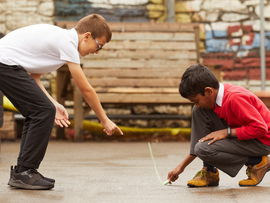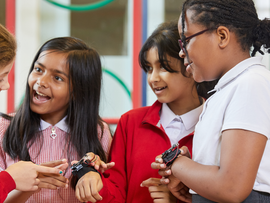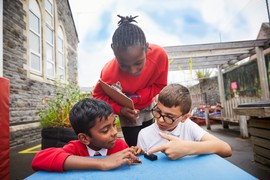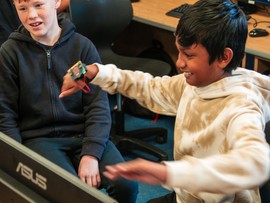Outdoor learning with micro:bit data investigations
A fresh set of activities for the micro:bit. Inspiring videos, teacher guides and student activities designed to save time and take learning outside this summer term

Summer term brings warmer days, outdoor activities, birdsong and insects to our school playgrounds, making them perfect for a class data investigation. Explore your school playground using data collection skills and create a unique class view of your school outdoor space this summer term.
These micro:bit projects, teacher guides, exciting how to videos and worksheet templates will save you time and make it easy to get started. It’s all mapped to the English, Northern Irish, Scottish and Welsh curricula, so that learning is covered.
Transform your pupils into data scientists
- Introduce the survey with a discussion on the importance of data
- Use the micro:bit's temperature sensor to compare differences in to compare surface temperatures of different materials in your playground
- Investigate the biodiversity of plants and animals in your playground with a micro:bit biodiversity counter
- Measure your playground area, using the micro:bit to help calculate distances
- Use a brand new program on the micro:bit to track physical activity in the playground.

Comparing surface temperatures in the playground

Investigating biodiversity in your playground

Measuring the area of your playground

Tracking our physical activity in the playground

Exploring machine learning with the micro:bit.

Guidance and more information about curriculum links

Guidance and more information about curriculum links
Time to take the code outside!
All of the lesson resources were created between the BBC Education and Micro:bit Educational Foundation, especially designed for primary schools to integrate coding, maths, data science and outdoor learning into fun, simple activities. Give them a go and share your class experience with us on social media!


